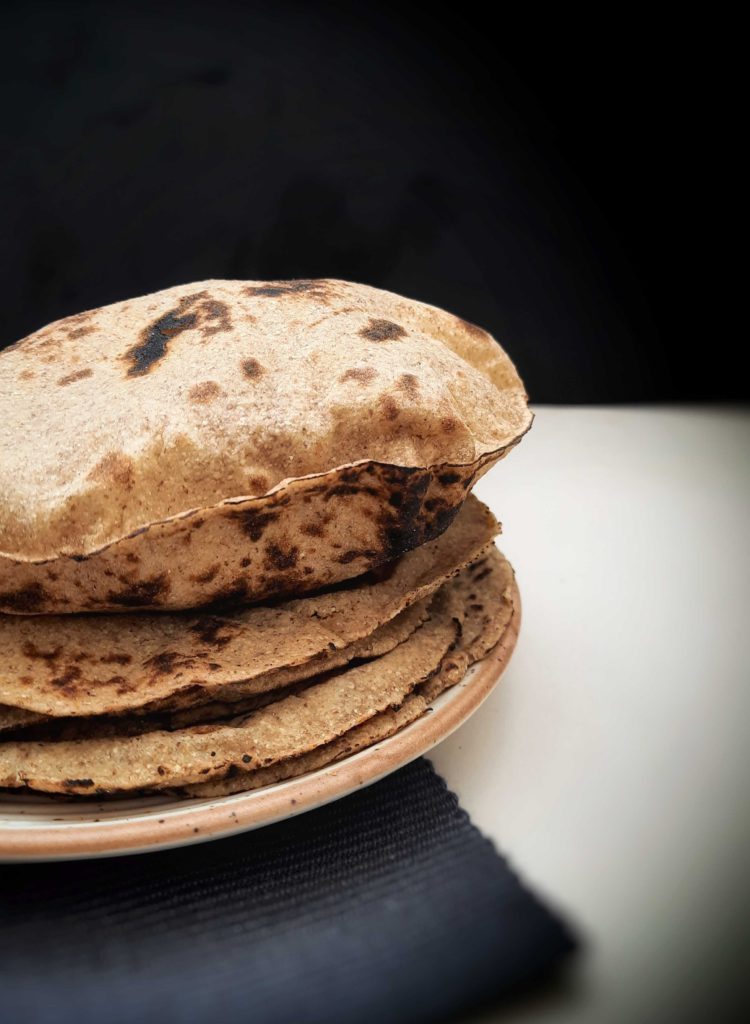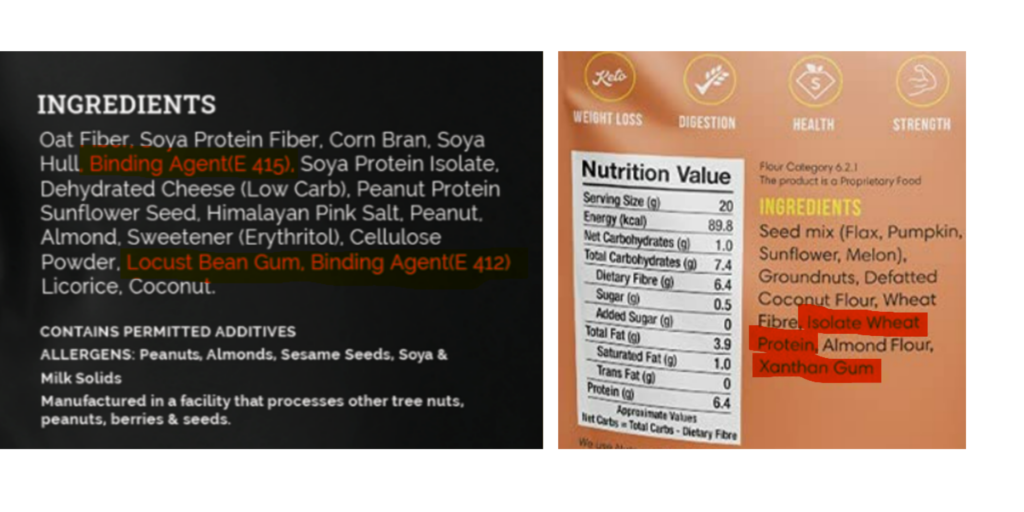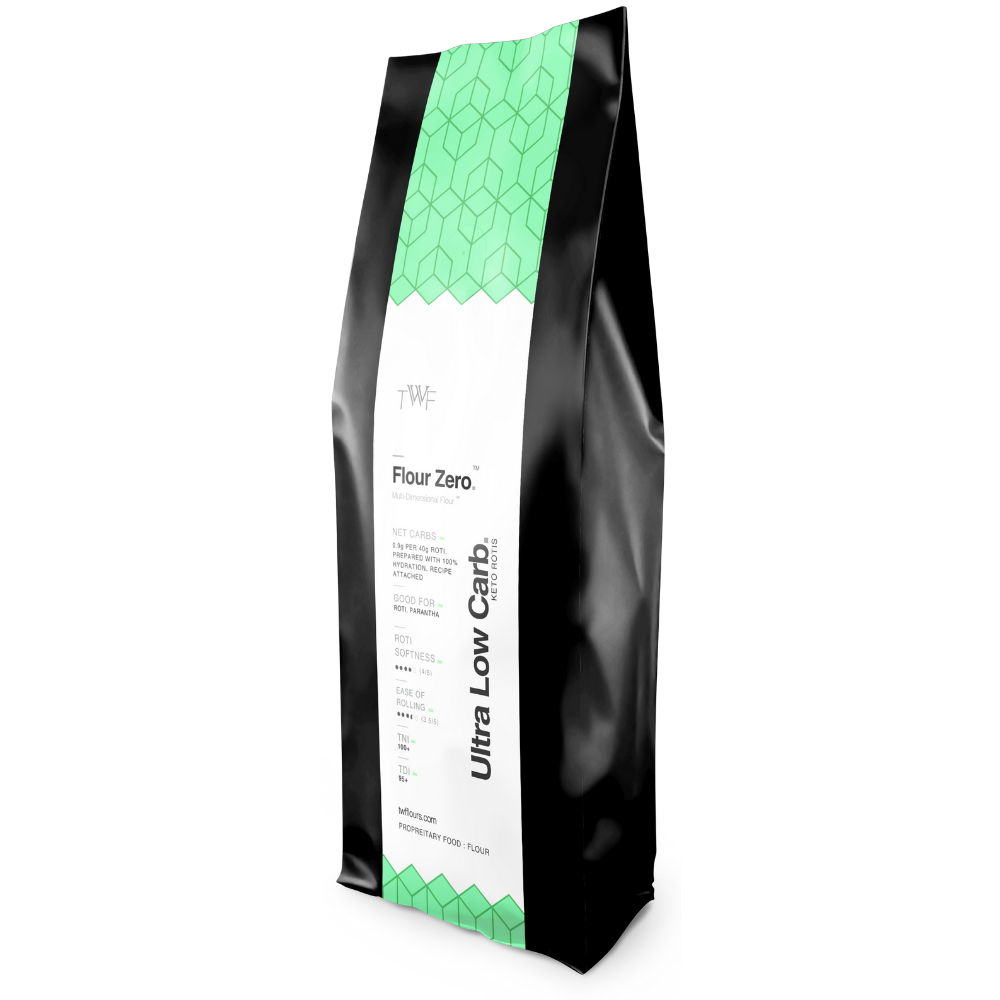Chemicals and other non-Food Ingredients in your Keto Flour

Have you ever gazed at the extensive list of ingredients on the back label of your keto flours? Some of which sound very mechanical or align? Like the binding agent (E 415), locust bean gum, cellulose, xanthan gum, dehydrated cheese, isolated soy protein, etc.? And should you be worried about consuming them? Watch out for the non-food ingredients in your keto flour (Fig. 1, Fig. 3).
Consumers on a keto diet must restrict carbohydrate intake to below 50 grams per day. This leaves little room for bread, rotis, or cereals. Its carb restrictions make the diet ‘un-friendly’ with grain-based foods which comprise around 50-60% of an average Indian’s meal! For the consumers, the bigger challenge is finding food that is keto-friendly, palatable, and free from unnecessary fillers, flavors, and binders.
While the wheat flours get their distinct sweet-earthy flavor, soft texture, and a favorable mouth-feel from their complex starches and proteins, keto-friendly flours are often grain or cereal-free. Lack of these starches makes keto-friendly or alternative low carb rotis, crumbly and dry and bland tasting. This is why, most keto-friendly low-carb flours rely on additives, binders, thickeners, and a host of flavoring agents (Fig. 1).
In a tryst of providing sustainable food options for keto consumers, the low-carb flours are laden with ‘non-food’ ingredients. These are a far cry from ‘natural’ foods. These ingredients might seem harmless but regular consumption leads to unfavorable health outcomes.
Binders as ‘Gluten-replacers’
Binders like guar gum, xanthan gum, acacia gum, etc. are used as ‘gluten-replacers’. They help to retain the qualities of rotis and similar products while eliminating grains or cereals from the ingredients. However, if your diet revolves around eating low-carb foods containing gums, you may experience digestive problems. This includes abdominal gas, bloating, and loose stools. Bean-derived gums like guar gum or locust bean gum may interfere with the absorption of zinc, iron, and calcium!

Fillers as bulking agents
Food fillers are additives that help bulk up the weight of food without adding extra calories or carbs! With an end goal of driving down the net carb, low-carb flours often rely on fillers. These are mostly plant-derived and are passed off as ‘natural’ food ingredients. These ingredients make sense to our bodies when they are in their natural forms. But, the extracted or isolated forms are most often perilous to our health. This is because nutrients and components of food work in symphony mostly in their natural state in whole foods (Fig. 2).

Some of the most common fillers to watch out for are- cellulose, soy isolates, potassium bromate, carrageenan extracts, etc.

Protein Isolates for boosting protein
Protein extracts are often added into low-carb flour to increase the protein content of the flour without adding carbohydrates that come with whole grain (Fig. 3). While the isolate might provide limited gains on moderate use, it could lead to health issues on regular consumption.
“Extracted soy protein, may promote cancer and cancer growth”, according to a study.
[Source – Relationship of dietary protein and soy isoflavones to serum IGF-1 and IGF binding proteins in the Prostate Cancer Lifestyle Trial]
Some of the most common protein isolates to watch out for are – soy protein isolates, wheat protein isolates, milk protein isolates, etc.
TWF’s Flour Zero™ is a Wheat-based Ultra-low-carb Flour
At TWF, we believe in nutritious, natural grain-based solutions. We are all about whole foods. And so, we introduced a grain-based solution! Unlike many competing low-carb or keto flour blends that skip wheat, TWF’s new Flour Zero™ is wheat-based and contains gluten. It delivers low-carb health benefits without compromising taste or texture. TWF’s Flour Zero™ is a precision-crafted flour that revolutionizes low carb and keto diets. Casting aside the uninhibited use of carcinogens and additives in Keto flours, Flour Zero™ uses intelligent milling to give you unadulterated, all-natural rotis with less than 1g net carb.

Flour Zero™ is built atop a carefully curated blend of grains, nuts, seeds, and TWF’s signature Reliq wheat and Rye. This blend is Multi-Dimensionally Milled™ to foster smart collaboration between macro and micronutrients. These smart interactions interlock and reduce the bio-availability of carbs while increasing the deliverability of all other nutrients to you. This novel approach results in well-rounded, ultra-low-carb rotis that puff, tear, and behave like regular wheat rotis. You can find the recipe for the softest and most flavorful Flour Zero™ rotis here.

The end result is Flour Zero™, an ultra-low-carb flour blend that behaves functionally like traditional wheat flour. So, it is easier for consumers to sustain the low-carb diet, without being deprived of good, nutritious, natural food.


Responses